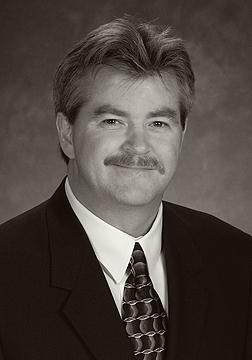The Time Is Now
Everyone agrees that our health care system is in need of serious reform. Some go so far as to say we need to transform our health care system. I have some different ideas on this subject. I don't think we need to look to the future for the transformation of our health care system. I think it is happening right now. This is it. This is what it looks like and feels like. We seem to think it is going to be some type of pleasant experience. It's not. It is this way because we must simultaneously dismantle the model upon which the established paradigm of delivering health care is built and replace it with a new model upon which the emerging paradigm of delivering health care will become established. It must do this and continue to deliver health care to our society. It is not an easy task to do but I believe this process has already begun.
The Gatekeeper
The established paradigm of delivering health care is based on the classic patient-physician relationship. Let's call this paradigm Health Care System 1.0 to borrow a software version analogy. What we have witnessed over the last forty years has been an unprecedented attack on this relationship. Much of it has focused on the role of the physician as the primary gatekeeper to the health care system's vast resources. Most if not all major consultations, prescription medications, in-patient and out-patient treatments and operations were accessed by first going through a physician. If you need anything available in Health Care System 1.0 you must first be granted access by a doctor. In version 1.0 this made sense. The doctors education and training was an essential element needed to direct the patient toward the best available resource. It was the doctors experience with version 1.0 that helped guide the patient through this complex-adaptive system. So where is the evidence that this relationship is under attack or even strained?
Under Pressure
The patient-physician relationship is experiencing multiple sources of pressure. Reimbursements for physician services continue to be cut or at least not increase in a manner to keep up with the cost of living. The rise in medical liability rates has also created a pressure by increasing practice expenses. This means that each patient contact results in reduced net payment to the physician and an increased exposure to medical liability risk. In order to maintain the same level of income a physician must gravitate toward contacts with either reduced risk or improved reimbursement per contact. In addition, insurance companies want a greater say in what treatments a patient may undergo or what medications they may be prescribed. This increases the "hassle factor" for physicians struggling to match allowable treatments and medications with what they believe to be the standard of care. What is slowly happening is the role of the physician as gatekeeper is being stripped away. The combined effect of decreased reimbursement, increased expense, increased medical liability risk and outside sources directing medical care is passively conspiring to remove physicians from this role. Hear me out, I said remove physicians from this role, not entirely remove physicians from the Health Care System. So who or what will assume this role?
Design Specifications for Gatekeeper 2.0
Clayton Christensen touched on this in his recent book, Seeing What's Next. I referenced this source in a previous blog addressing disruptive innovation and trauma centers but it's worth repeating because it really focuses on how this process is currently progressing. He summarized this in the chapter titled "Healing the 800-Pound Gorilla".
1) Scientific progress leads to better categorization and the development of rules guiding prevention and treatment.
2) Those rules open the door for less-skilled people to do what previously required deep expertise.
3) Non market forces affect the market for innovation by influencing industry players motivation and ability.
I believe as we get better at defining the rules and integrate them into our growing network of information technology these will become the protocols and pathways used by the less-skilled people. This is already in place for mid-levels practicing with Minute Clinic. The protocols and pathways will need to be stored in a platform that can access the information at all times. The artificial intelligence built into this platform will guide the mid-level and eventually even less-skilled people through the maze once only entrusted to a physician. It will need to do this in a way that improves health care access to the patient, at a lower cost with "as good as" results. Minute Clinic and its copycats are already doing this for relatively minor health problems. As they get better at this process they will inevitably migrate up the value chain.
Summer Is Coming
So am I for it or against it? I am neither. I see it as inevitable. It would be like asking me if I am for or against the coming summer. Since I live in Phoenix, Arizona it would be like asking me if I endorse one hundred and fifteen degrees in the shade? I don't really endorse it one way or another I just prepare for it if I plan on being here in the summer months. Between now and then the average daily temperature will slowly rise. It doesn't happen all at once but a little bit at a time. I see the coming of Health Care System 2.0 the same way. I guess in some ways I endorse it because I hope it really will deliver on the promise of an improved Health Care System. Either way, just like the coming summer, I plan on preparing for it by adapting to the daily changes.
Sunday, February 11, 2007
Health Care System 2.0
Subscribe to:
Post Comments (Atom)

No comments:
Post a Comment